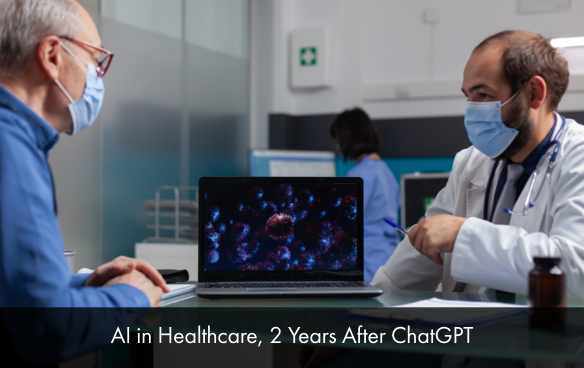It’s been two years since the release of ChatGPT, which caused ripples across the industry. NVIDIA surged in value, becoming the most valuable company in the world (due to its leading GPU and AI accelerator technology).
Healthcare was also no exception, with more EHR software systems adopting AI-enhanced features such as Clinical Decision Support (CDS), AI transcription, AI assistants, and more.
However, it’s not all been rosy, so today we’ll be covering the drawbacks and benefits concerning AI in EHR software, and the different discussions to be aware of as our Health IT systems continue to evolve.
AI in Today’s Landscape
The applications for AI in EMR software systems have diversified greatly. Whilst initially, and still, being used for patient data analysis administrative assistance, and predictive analytics, AI is now being used for organizing notes, automating reminders, and generating clinical summaries – alleviating clinical workflows and improving efficiency.
ChatGPT was pivotal because of its breakthrough in Natural Language Processing (NLP). It’s Natural Language Processing which allows us to use natural human language as a medium for interacting with our programs, as well as enabling programs to understand and extrapolate information from human language (e.g. from patient records and other health documents).
The potential for AI to provide insights into patient’s health information and practice data is extremely exciting, but then again this brings us to one of our first major concerns: can we trust AI to give us reliable information every time?
Arguments Against AI in Healthcare
The biggest issue with AI is its propensity to hallucinate – to tell you something wrong with great confidence that it’s correct. This is especially crucial in healthcare settings where any inaccuracies can be detrimental.
A JAMA study showed a correlation between clinician diagnostic accuracy and the accuracy of AI models for clinical predictions (i.e. as models do better, clinician accuracy tends to do so as well). However, the reverse was also true as it decreased with systematically biased AI predictions. Furthermore, AI explanations did not improve the harmful effects (of the biased models) on clinician accuracy.
We ought to consider the ramifications: what if an AI-generated summary leaves out some details, or what if an AI transcription mishears ‘hypokalemia’ for ‘hyperkalemia’?
In a perfect world we might be able to remove AI tools from our EHR software solutions until we know with certainty that they are reliable and error-free – though that may not be practical, so instead can we continue to use AI with given the potential ramifications in exchange for the added efficiency and time-saved?
The Other Side of the Argument
AI, when harnessed appropriately, provides undeniable benefits. Beyond EHRs, AI-driven analytics are transforming patient care by identifying risk factors, predicting disease outbreaks, and tailoring treatment plans. Tech-savvy healthcare environments are embracing these innovations effectively, creating ecosystems where AI tools complement human expertise.
According to Healthcare IT News, integrating digital elements into healthcare settings makes a notable difference in efficiency and outcomes. These environments tend to adopt a blend of technology and the human element, achieving a more dynamic, responsive approach to patient care.
Conclusion
To finish off, it’s safe to say that no technology should completely replace the expertise and experience of a medical professional – in the foreseeable future. As healthcare practices continue to adopt and use AI more frequently, it’s important that we avoid reliance on these tools and only see them as a tools to supplement our current workflows.
It’s important to find the right balance so that clinicians can leverage the added efficiency, access to information, and decision-making support that AI may bring whilst also being trained enough to recognize the limitations of the technology and work around them.








